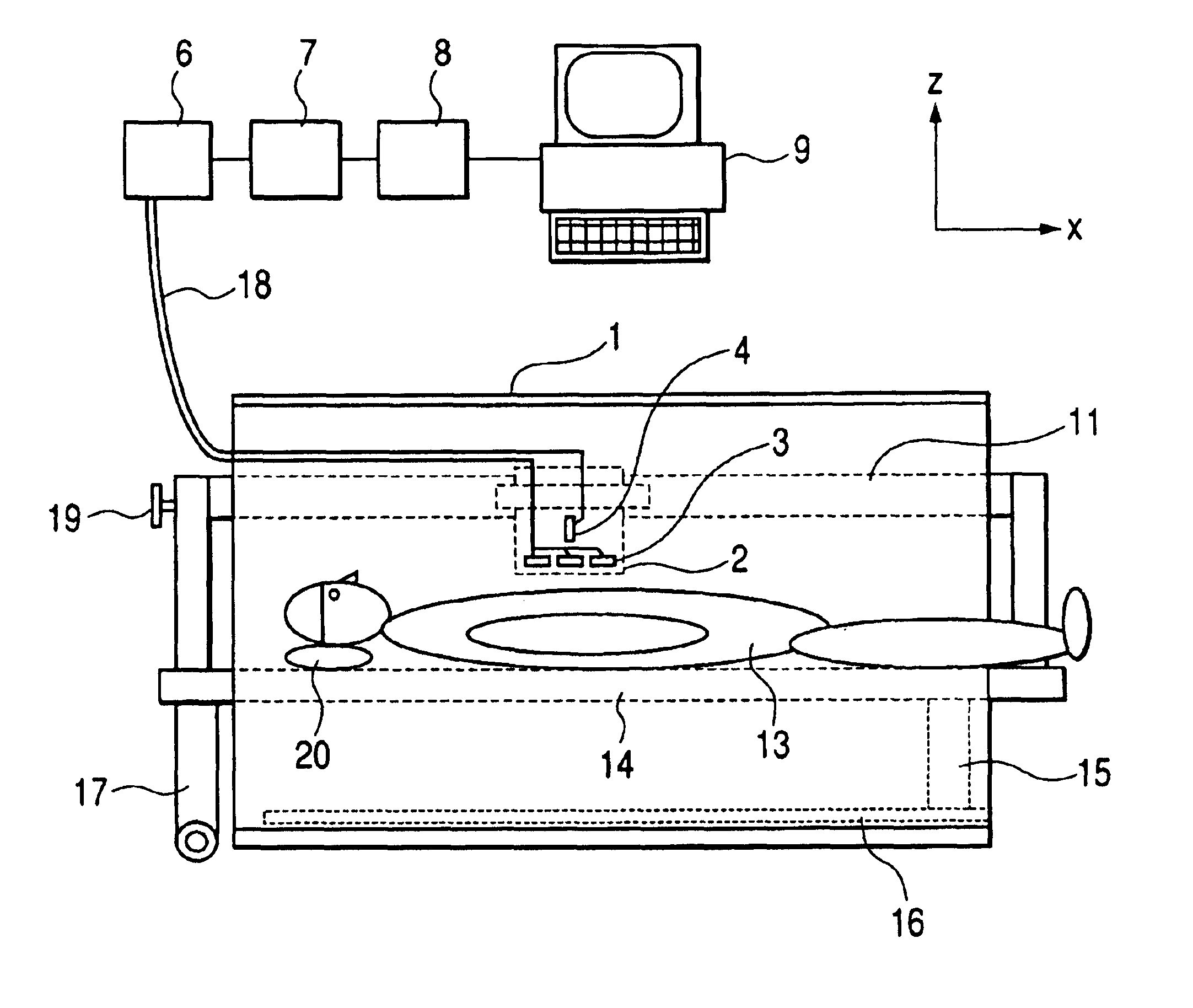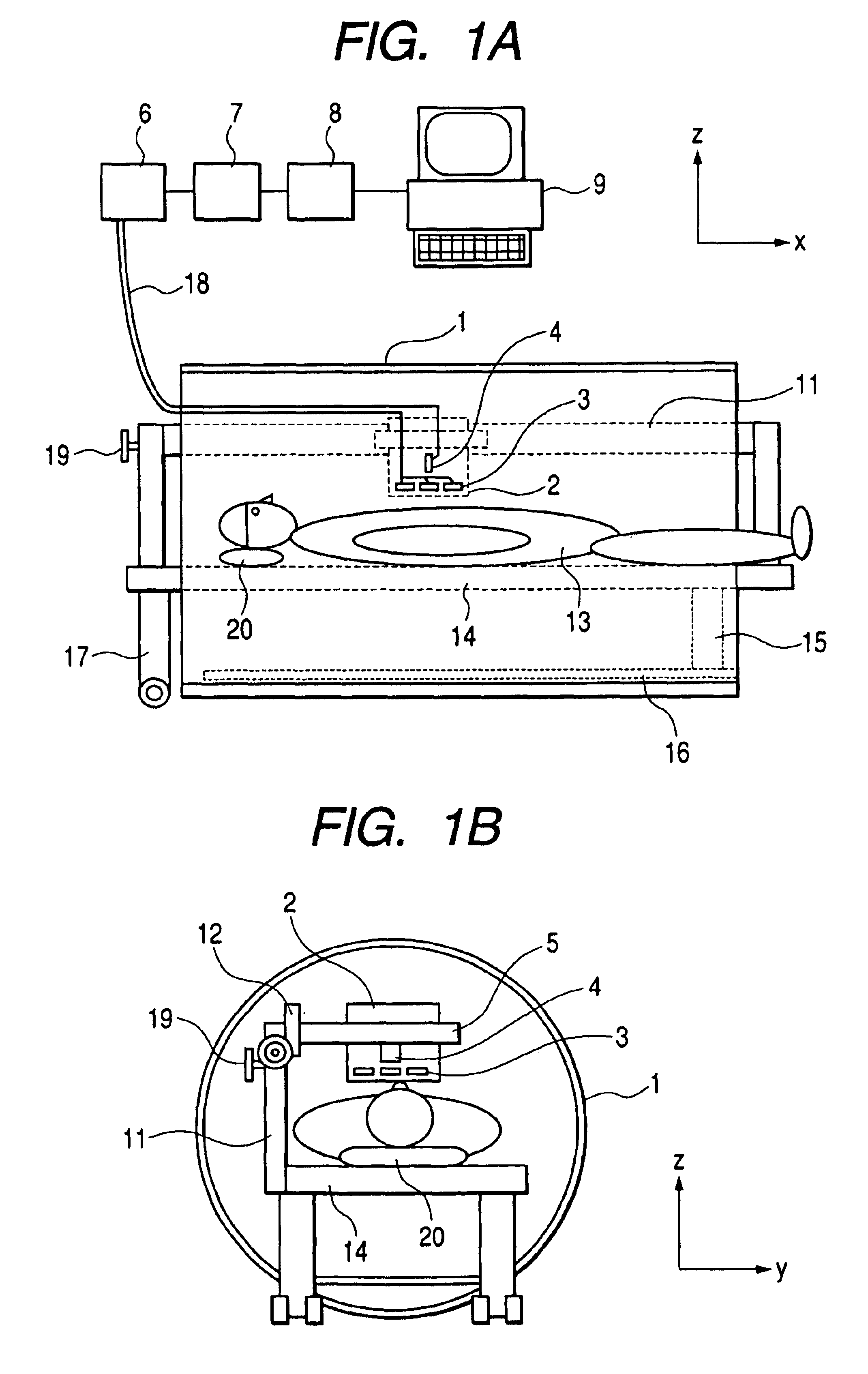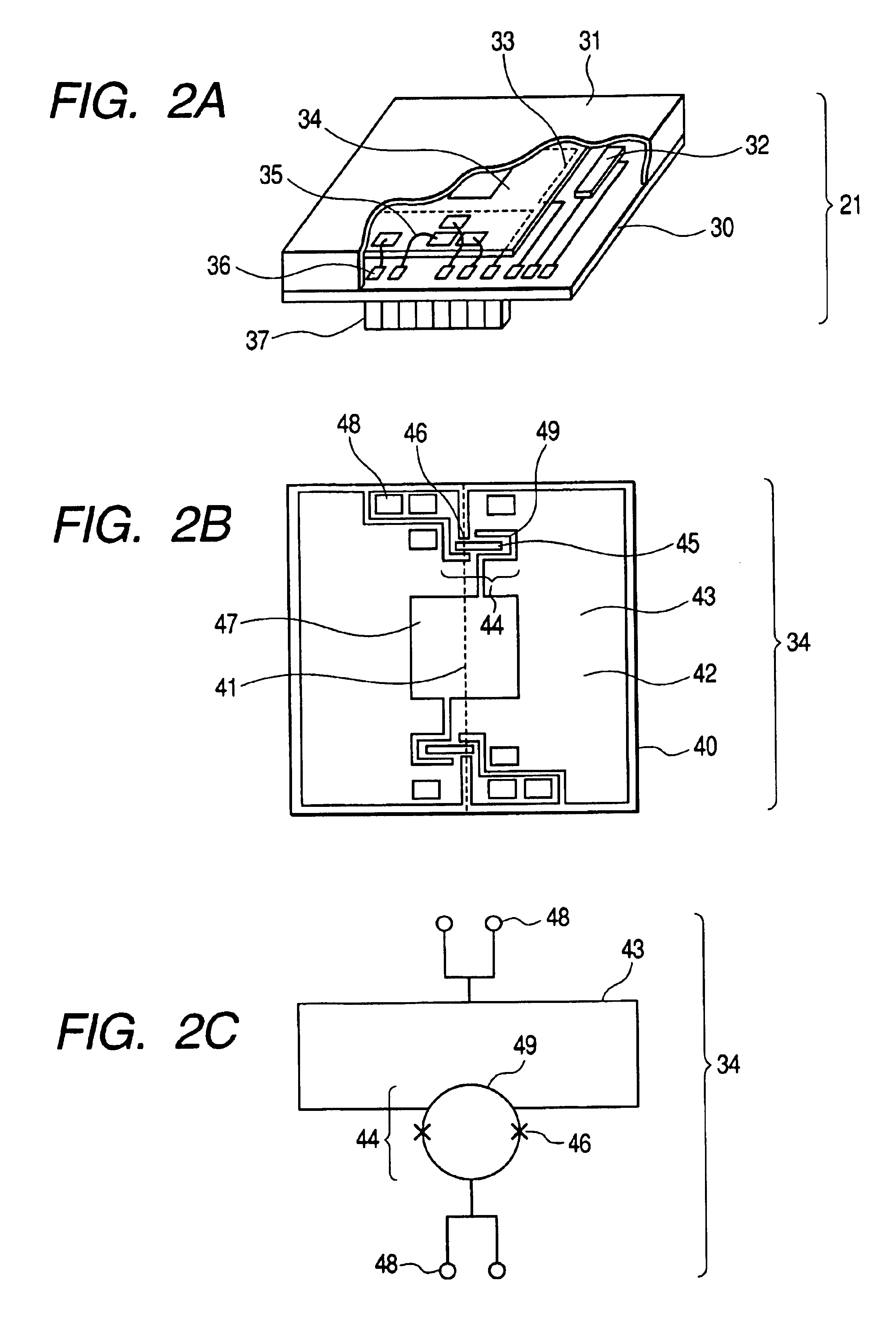Magnetic field measurement system
a measurement system and magnetic field technology, applied in the direction of magnetic field measurement using superconductive devices, instruments, applications, etc., can solve the problems of difficult to determine three factors, disadvantageous system scale, and difficult to determine three or more factors that should be corrected, etc., to achieve efficient measurement
- Summary
- Abstract
- Description
- Claims
- Application Information
AI Technical Summary
Benefits of technology
Problems solved by technology
Method used
Image
Examples
embodiment 1
FIGS. 1 are views each showing an example of a structure of a magnetic field measurement system according a first embodiment of the present invention, which is a magnetocardiographic measurement system using a cylindrical magnetic shield. It is assumed that the center axis of the cylindrical magnetic shield 1 is an x-axis and two axes orthogonal to the x-axis are y- and z-axes. Of FIGS. 1, FIG. 1A is an x-z cross sectional view and FIG. 1B is a y-z cross sectional view.
In the transversely mounted cylindrical magnetic shield 1, a bed 14 on which a subject 13 lies down in a recumbent position with his or her head supported by a pillow 20 and a dewar 2 are disposed. A plurality of sensing magnetometers 3 and a first reference magnetometer 4 are disposed on the inner bottom portion of the dewar 2 and cooled with a cryogen. The first embodiment has used the magnetometers each composed of a high critical temperature superconductor operable at a liquid nitrogen temperature and cooled the m...
embodiment 2
The magnitude of an external field greatly depends on the location at which the system is placed. The external field largely fluctuates at a location closer to, e.g., a railroad track or an elevator.
FIGS. 6 are views showing examples of magneto-cardiograms obtained from measurement using a magnetic field measurement system according to a second embodiment of the present invention, of which FIG. 6A shows magnetic field signals when external field correction according to the second embodiment has not been performed and FIG. 6B shows magnetic field signals when the external field correction according to the second embodiment has been performed.
FIG. 6A shows the waveforms of output signals (B(1, 1), B(2, 1)) from the sensing magnetometers when measurement was performed by placing a magnetocardiograph (magnetic field measurement system) inside a building positioned at a distance of about 30 m from a train track. The band was in the range of 0.1 Hz to 80 Hz and analog notch filters of 50,...
embodiment 3
When magnetocardiographic measurement was performed by using the system of the structure according to the first embodiment, it was proved that noise at a frequency of about several hertz remained in some cases depending on the place where the system is disposed.
FIG. 7 is a view showing examples of magnetocardiograms obtained from measurement using the magnetic field measurement system according to a third embodiment of the present invention. The magnetic field signal in the uppermost portion of FIG. 7 represents the difference data X(1, 1) before external field correction was performed. The magnetic field signal in the middle portion of FIG. 7 represents the difference data Cx(1, 1) after correction using the first reference signal was performed. Although the large fluctuations induced by the external field have been removed by performing the correction using the first reference signal described in the first embodiment, a small oscillation component of about 5 Hz remains at each of ...
PUM
 Login to View More
Login to View More Abstract
Description
Claims
Application Information
 Login to View More
Login to View More - R&D
- Intellectual Property
- Life Sciences
- Materials
- Tech Scout
- Unparalleled Data Quality
- Higher Quality Content
- 60% Fewer Hallucinations
Browse by: Latest US Patents, China's latest patents, Technical Efficacy Thesaurus, Application Domain, Technology Topic, Popular Technical Reports.
© 2025 PatSnap. All rights reserved.Legal|Privacy policy|Modern Slavery Act Transparency Statement|Sitemap|About US| Contact US: help@patsnap.com



